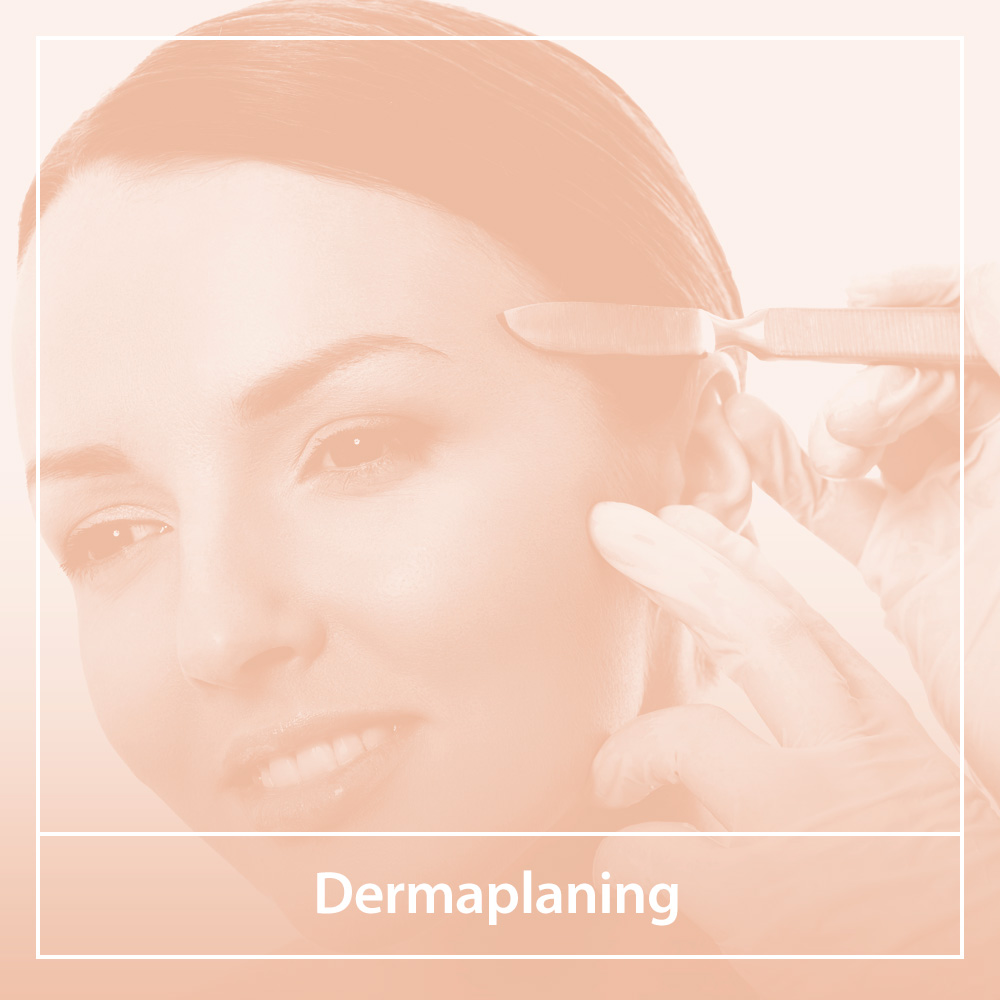No products in the basket.
Blog
Dermaplaning in General | Cosmetic Skin Treatment
Dermaplaning is a cosmetic skin treatment that involves using a surgical scalpel or a specialized tool to remove the top layer of dead skin cells and fine facial hair (peach fuzz). The procedure has become increasingly popular in recent years due to its benefits, including brighter and smoother skin, improved product penetration, and reduced appearance of fine lines and acne scars.
Dermaplaning works by gently scraping off the outer layer of dead skin cells, which can accumulate over time and dull the skin’s appearance. The removal of this layer can reveal a brighter, smoother complexion and can also improve the penetration of topical skincare products, as the skin’s surface is less cluttered with dead cells. Furthermore, by removing the fine facial hair, the skin’s surface is left feeling smoother and softer.
In addition to its cosmetic benefits, dermaplaning can also be an effective treatment for various skin concerns. For instance, the removal of the top layer of skin can help reduce the appearance of fine lines and wrinkles, as well as minimize the appearance of acne scars. Dermaplaning can also improve the skin’s overall texture, making it look smoother and more even. Furthermore, by removing the top layer of dead skin cells, the skin is better able to absorb and retain moisture, leading to improved hydration levels.
The procedure itself is relatively simple and non-invasive. The skin is first cleansed to remove any impurities, and the practitioner will then use a surgical scalpel or a specialized tool to gently scrape the top layer of skin and facial hair. The treatment typically takes around 30 minutes, and the practitioner will work on small sections of the face at a time, moving the blade in a gentle upward motion.
Dermaplaning is generally considered safe for most skin types, as long as it is performed by a licensed and trained professional. However, it is important to note that the procedure may not be suitable for everyone. For instance, people with active acne breakouts, rosacea, or skin conditions like eczema or psoriasis may need to avoid dermaplaning. Similarly, people with excessively sensitive skin or those who are prone to keloid scarring may also want to avoid the procedure.
After the treatment, the skin may be slightly red and sensitive, but these side effects are generally short-lived and will resolve within a few hours. To minimize the risk of irritation, it is important to avoid using harsh skincare products for a few days following the procedure, and to protect the skin from sun exposure by applying a broad-spectrum sunscreen.
It is also worth noting that dermaplaning is not a permanent solution, and the fine facial hair will grow back within a few weeks. Furthermore, while the treatment can improve the skin’s appearance and texture, it is not a substitute for a good skincare routine, which should include regular cleansing, moisturizing, and protection from the sun.
In conclusion, dermaplaning is a simple and effective cosmetic treatment that can provide a number of benefits for the skin, including improved texture and brightness, reduced appearance of fine lines and acne scars, and improved hydration levels. The procedure is generally considered safe, but it is important to seek advice from a licensed and trained professional before undergoing treatment, as it may not be suitable for everyone. Ultimately, dermaplaning is just one component of a good skincare routine, and it is important to maintain a healthy diet, use appropriate skincare products, and protect the skin from sun exposure for optimal skin health.

